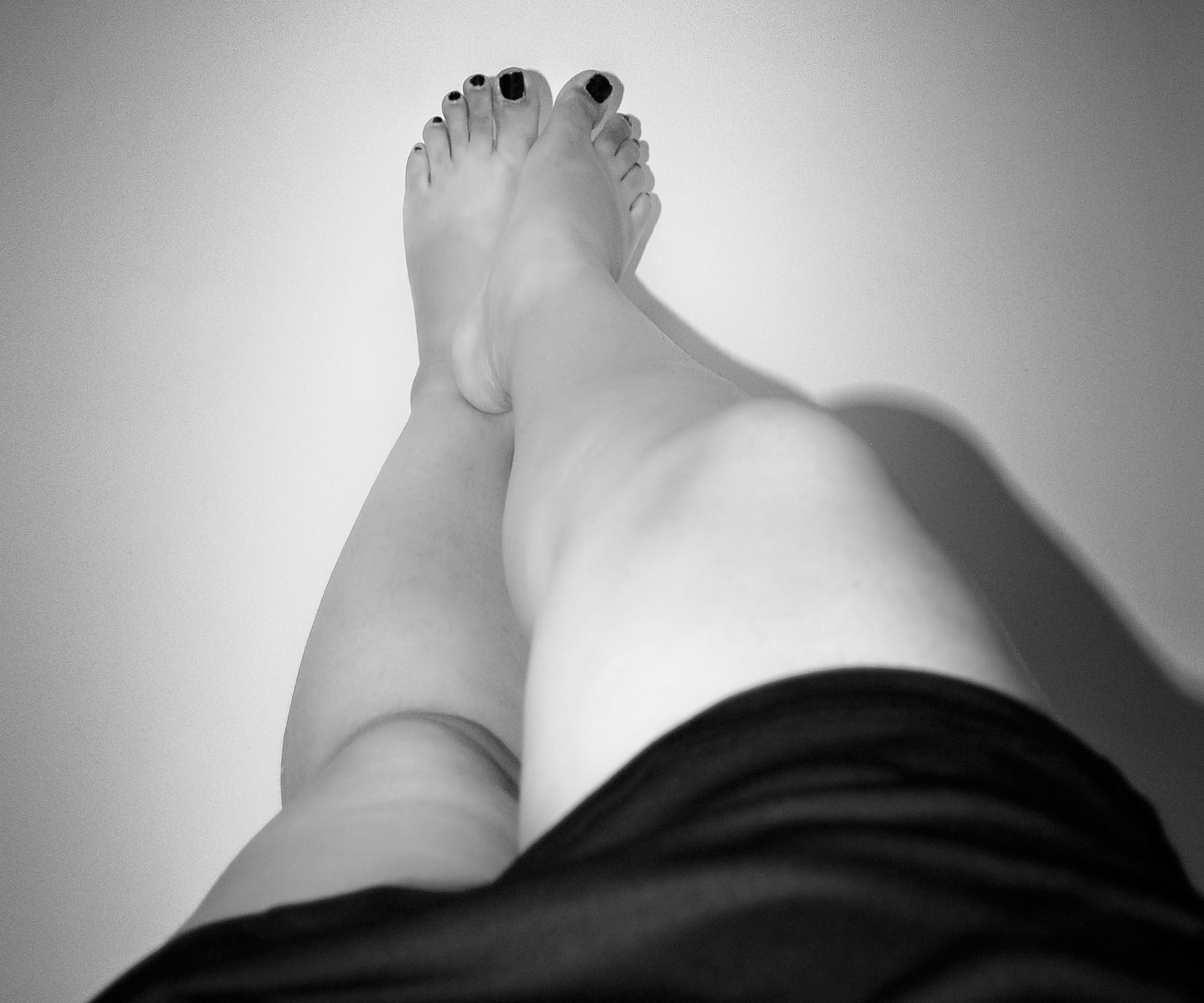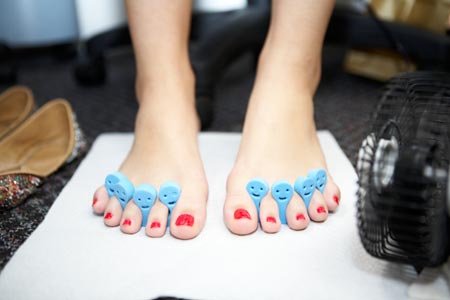One of the good things about this time of year is you can stop paying attention to your toenails, as they’ll be hidden away in socks and stockings for the next few months. Mind you, it has only been in the past year or so that my toenails got much attention, apart from the occasional scrub and clip. Having being told by my best friend that I had “man’s feet” when I was 13 or so, it was a long time before I dared draw attention to them.
But these days, particularly in sandal-season or in a yoga class, you’re more likely to attract attention if your toenails aren’t painted than if they are – it’s almost as if exposing ungroomed toenails is to go out partially dressed.
So I started going to a nail bar in a mall in West Auckland; nothing flash, and where I can get a no-frills pedicure (no foot soak, no foot massage) for around $18. It takes only 20 minutes, and most of that is spent deciding upon the nail polish colour and waiting for the lacquer to dry. There’s nothing flash about the rest of the clientele, either – let’s say there are a lot of elasticised waistbands. Evidently, paying someone else to paint your nails, an activity once reserved for special occasions, is now widely regarded as a form of basic self-maintenance, even among those on the most average incomes.
Like the hundreds of nail bars that have appeared in malls all over the country in the past decade, the place is staffed by young women, mostly immigrants from Vietnam who have limited English. The nice thing about the language barrier is that it removes any obligation for idle chitchat, which is fine by me. I’m here to get my toenails painted and, as I’m still a bit awkward about this, I prefer to keep things business-like. This lack of personal interaction also allows me to side-step any internal debate I might be having about the ethics of paying a young immigrant woman to paint and buff my toenails.
But in May, just as I was getting used to it, the New York Times published the results of its year-long investigation into nail bars in the US, in which more than 150 nail salon workers and owners were interviewed, in four languages. The “price of nice nails”, the author concluded, has been the creation of an underclass of immigrant women subject to high rates of exploitation, abuse and health problems.
There’s no good evidence that what is occurring in the salons of Manhattan is also happening in the malls of New Zealand, although we shouldn’t be surprised if it was, to some extent, given that many of the people involved are a historically vulnerable group and one which is unlikely to make official complaints about wages and conditions.

Journalist Donna Chisholm wrote about some of this in an article for Metro magazine in 2013. She mainly looked at concerns around the unhygienic practices in cheap nail bars and the health risks this posed to customers – the fungal infections, warts and athlete’s foot that can be passed from hand to foot etc, via files, buffing blocks and foot baths.
But there were concerns about pay rates, too. Chisholm spoke to one young nail technician who’d been here for two years, having trained in Vietnam, who was paid $7 an hour in cash when she first arrived – increasing to $10 as she became faster and better at the job. Chisholm also noted that the staff manual of ProfessioNAIL, the country’s largest nail salon franchise and largely a Vietnamese business, prohibited staff from speaking Vietnamese in front of customers.
I assume this is some front-of-house convention, based on the assumption that it’s considered impolite to speak a foreign language in front of customers. And yet it’s okay for customers to speak a language that is foreign to the people painting their nails? This doesn’t seem right. Actually, it seems finding it acceptable – that an immigrant woman isn’t allowed to talk to her colleagues in her own language while tending my toenails – would be downright imperious.
Incidentally, the reason so many nail bars are owned and staffed by Vietnamese people can apparently be traced back to the well-meaning efforts of Tippi Hedren, the actor best known for her role in Hitchcock’s The Birds. Having visited a Vietnamese refugee camp in California in the 1970s, where many of the women were captivated by the actor’s highly polished talons, she identified a vocational opportunity, and brought in her manicurist to train the women on how to shape, paint and buff other women’s nails.
So you could argue, all these decades later, the manicure and pedicure industry still offers an opportunity for immigrant workers with low skills and little English. Or you could say it has created a haven for exploitation. Probably it’s a bit of both, but I don’t actually know, and I can’t ask the women who paint my toenails because I don’t speak Vietnamese.
One of the major concerns raised by the Times article was the health implications for those working in nail bars, linking exposure to the chemicals used in the industry to respiratory illness and even miscarriages. The science is lacking on this, but those in the industry are exposed to some pretty unpleasant solvents on a daily basis, which can’t be a good thing. Whether it’s a serious health issue will depend on dosage (the amount and type of solvents involved, the period of time in which a person is exposed to them) and ameliorating factors such as ventilation. But I suspect it will be some time before the manicure industry receives the level of investigation necessary to give us a clear picture on this.
So behind my budget pedicure lurks an ethical can of worms, with issues around the status of women and immigrants, around labour practices and workplace toxins. Could my pedicure be making other women sick? What should I do about this? I am perfectly capable of taking care of my nails myself, of course, although my personal boycott won’t do much for those in the industry. But ladies, we probably do need to think about this. And now I’m reflecting on my coral-coloured toenails, and seeing them in a more complicated light, they just don’t look so pretty.
Words by: Margo White
Photos by: Getty Images


